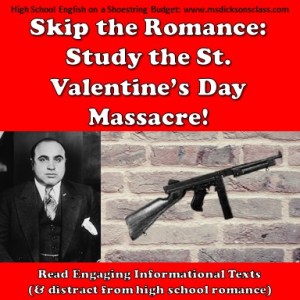The “I Have a Dream” speech is a popular speech to teach. Students often learn about it at younger grades, though there’s certainly benefit to returning to this powerful speech in the older grades as well. This speech is worth a closer study into the analogies and the language used, as well as the messaging.

Here are some activities to use with teaching Dr. Martin Luther King, Jr’s “I Have a Dream” Speech for High School and Middle School English ELA Classes for MLK Day and beyond.
I Have a Dream Speech Then and Now Research Project: There is history behind the injustices in Dr. King’s speech. Sometimes more than history books include. Things students don’t always realize. To do something more with the speech, since my students were already familiar with it, I made a project that had students research specifics of 5 of the dreams mentioned in the speech, then come back together to share their findings. The project concluded with reflecting on the progress made towards achieving the dreams. I always allow solo projects. So the resource available has several versions to help fit your classroom.

Two Text Comparison Activity: Studying the speech along side other texts is a good way to work with it at the secondary level and building off the familiarity many students have with the speech. There are a good many powerful speeches from the Civil Rights era. Also, as a Common Core task, students could compare the “I Have a Dream” speech with another important speech.
Some speeches to compare to the “I Have a Dream” Speech by MLK:
- “Letter from a Birmingham Jail” Dr. King
- “Speech at the March on Washington” John Lewis (Aug. 28, 1963)
- “Address at the Detroit Walk to Freedom” Dr. King, 2 months before the Washington D.C. march and speech, compare to find similarities in this ‘predecessor’ speech
- John F. Kennedy’s 1963 “Address on Civil Rights”
Analyzing Analogies: this activity has students explore the analogies Dr. King uses in his speech. They will attempt to put those analogies into their own words or explain what they mean. This can help students think about what the message is and what the impact of using those analogies is. (This resource is free on TPT!)

I Also Have a Dream Classroom Project: A secondary level version of the project. Students make a project with their own dreams to improve their world. This project has students consider the community level, the state/ province/ regional level, the country level, and the world level in coming up with one or more ‘dreams’ (I also use the term “ideas” to improve the world, to help some students who get stuck on words like dreams.) Prewriting and reflection activities can add depth to the project. The slides (or paper-sized posters) can be displayed in class or hung in the hallways.
Reading Thinking and Quiz Questions: Reading questions can be a good tool for accountability without the stakes that come with a quiz. Quizzes are another tool for checking student knowledge. Critical thinking questions ask students to think further into the text and its ideas, with support.
Graphic Organizers: a different way to examine the text. Word Webs can record analogies or repeated phrases in the speech. Another activity is for students to map the locations in the speech and contemplate what’s different about the two groups of locations. A KWL is always helpful– especially if paired with additional research into Dr. King or his speech that lets students actually learn more about the L column item(s).
All of these activities are available as resources for purchase on TPT. Also, you can get the whole bundle at a discounted price.1
- Image credit for this post: https://upload.wikimedia.org/wikipedia/commons/8/81/Martin_Luther_King_-_March_on_Washington.jpg ↩︎




























